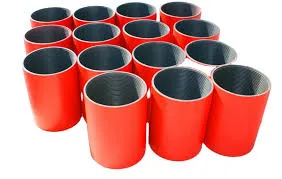- Afrikaans
- Albanian
- Amharic
- Arabic
- Armenian
- Azerbaijani
- Basque
- Belarusian
- Bengali
- Bosnian
- Bulgarian
- Catalan
- Cebuano
- Corsican
- Croatian
- Czech
- Danish
- Dutch
- English
- Esperanto
- Estonian
- Finnish
- French
- Frisian
- Galician
- Georgian
- German
- Greek
- Gujarati
- Haitian Creole
- hausa
- hawaiian
- Hebrew
- Hindi
- Miao
- Hungarian
- Icelandic
- igbo
- Indonesian
- irish
- Italian
- Japanese
- Javanese
- Kannada
- kazakh
- Khmer
- Rwandese
- Korean
- Kurdish
- Kyrgyz
- Lao
- Latin
- Latvian
- Lithuanian
- Luxembourgish
- Macedonian
- Malgashi
- Malay
- Malayalam
- Maltese
- Maori
- Marathi
- Mongolian
- Myanmar
- Nepali
- Norwegian
- Norwegian
- Occitan
- Pashto
- Persian
- Polish
- Portuguese
- Punjabi
- Romanian
- Russian
- Samoan
- Scottish Gaelic
- Serbian
- Sesotho
- Shona
- Sindhi
- Sinhala
- Slovak
- Slovenian
- Somali
- Spanish
- Sundanese
- Swahili
- Swedish
- Tagalog
- Tajik
- Tamil
- Tatar
- Telugu
- Thai
- Turkish
- Turkmen
- Ukrainian
- Urdu
- Uighur
- Uzbek
- Vietnamese
- Welsh
- Bantu
- Yiddish
- Yoruba
- Zulu
Aluminum Pipe Connectors and Accessories for Efficient Plumbing Solutions
Understanding Aluminum Pipe Couplings and Fittings
Aluminum pipe couplings and fittings are essential components in various industrial and construction applications. Known for their lightweight nature, corrosion resistance, and strength, aluminum has become a favored material for piping systems across multiple sectors. This article delves into the significance, types, applications, and advantages of aluminum pipe couplings and fittings.
Overview of Aluminum Pipe Couplings and Fittings
Couplings and fittings are used to connect different sections of pipes, enabling the transportation of fluids or gases effectively. Aluminum pipe fittings include a variety of shapes like elbows, tees, reducers, and flanges, each designed for specific purposes. Couplings, on the other hand, are primarily used to join two pipe ends securely.
Aluminum's properties make it a superior choice for certain applications. Unlike steel, aluminum does not rust, which makes it particularly beneficial in environments prone to moisture or extreme weather conditions. This corrosion resistance extends the lifespan of piping systems, reducing maintenance costs and downtime.
Types of Aluminum Pipe Fittings
1. Elbows These are used to change the direction of the pipe. Standard angles are 90 and 45 degrees, but custom angles can also be produced. 2. Tees Tee fittings allow for branching out from the main pipeline, facilitating fluid distribution in different directions.
4. Flanges Flanged fittings are utilized to connect pipes to other equipment or structures, featuring a flat surface for secure attachment.
aluminum pipe couplings and fittings

5. Couplings Available in various designs, couplings are integral for joining two pipe ends together, ensuring a tight seal.
Applications of Aluminum Pipe Fittings
Aluminum pipe couplings and fittings are utilized in a multitude of industries
- Construction Often used in scaffolding and structural supports due to their lightweight nature. - Automotive Used in cooling and exhaust systems as they can withstand high temperatures and maintain structural integrity. - Chemical Processing With their resistance to corrosion, aluminum fittings are ideal for transporting corrosive substances. - HVAC In heating, ventilation, and air conditioning systems, aluminum’s lightweight and thermal conductivity properties enhance efficiency.
Advantages of Aluminum Pipe Couplings and Fittings
- Lightweight Compared to other metals, aluminum is significantly lighter, resulting in easy handling and installation. - Corrosion Resistance The natural oxide layer on aluminum protects it from corrosion, making it suitable for outdoor and damp environments. - Cost-Effective While aluminum may initially appear more expensive than some alternatives, its durability and low maintenance needs translate to long-term savings. - Recyclability Aluminum is highly recyclable, making it an environmentally friendly option for modern piping solutions.
Conclusion
Aluminum pipe couplings and fittings offer an efficient and reliable solution for various piping needs. Their unique combination of lightness, strength, and resistance to corrosion makes them ideal for numerous applications. As industries continue to seek solutions that balance performance, longevity, and environmental responsibility, aluminum fittings stand out as a preferred choice. Whether in construction, automotive, or chemical processing, understanding the benefits and applications of aluminum couplings and fittings is crucial for professionals across these fields. Investing in high-quality aluminum pipe fittings not only enhances system performance but also contributes to sustainability in project management.
-
Tubing Pup Joints: Essential Components for Oil and Gas OperationsNewsJul.10,2025
-
Pup Joints: Essential Components for Reliable Drilling OperationsNewsJul.10,2025
-
Pipe Couplings: Connecting Your World EfficientlyNewsJul.10,2025
-
Mastering Oilfield Operations with Quality Tubing and CasingNewsJul.10,2025
-
High-Quality Casing Couplings for Every NeedNewsJul.10,2025
-
Boost Your Drilling Efficiency with Premium Crossover Tools & Seating NipplesNewsJul.10,2025







